Let’s Walk! A Guide to the Montrose Basin Reserve Walks
Are you longing to see a kingfisher? Would you like to see basking seals? Or, do you like to challenge yourself to identify wading birds?
Well, at Montrose Basin there are 5 main walks that will allow you take in the sights and sounds of the different areas of the wildlife reserve. They all offer a unique perspective of this fantastic reserve and the wildlife you’re likely to see in each area changes with the seasons.
This handy guide will help you choose the best walk for you, or your group. The walks covered are;
- The Lurgies (Short Walk)
- The Lurgies and Bridge of Dun (Long Walk)
- To the Shelduck Hide
- To the Wigeon Hide
- The Tayock Hide and Walk
Use our key to help you decide the best walk for you!
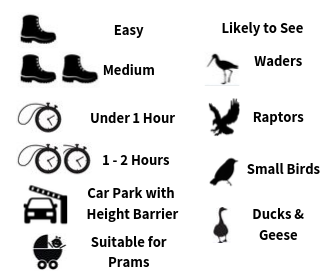
Where to start?
Before you embark on your walk, why not start at the Scottish Wildlife Trust’s Visitor Centre at Rossie Braes. Friendly staff and volunteers are on hand to give you the latest update on birds spotted on the reserve. They can also give you a handy reserve map to take with you on your walks.
The Visitor Centre is a great place to enjoy the views across the Basin using the high powered telescopes and binoculars, grab a hot drink and pick-up a gift or souvenir from the shop.
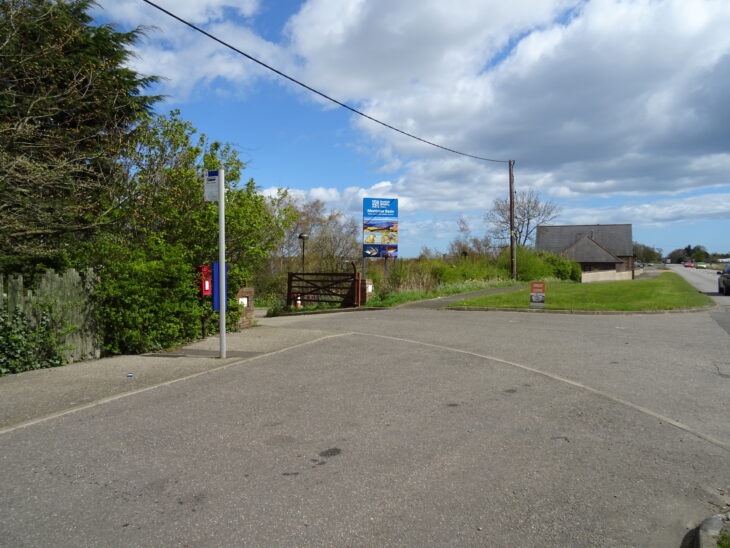
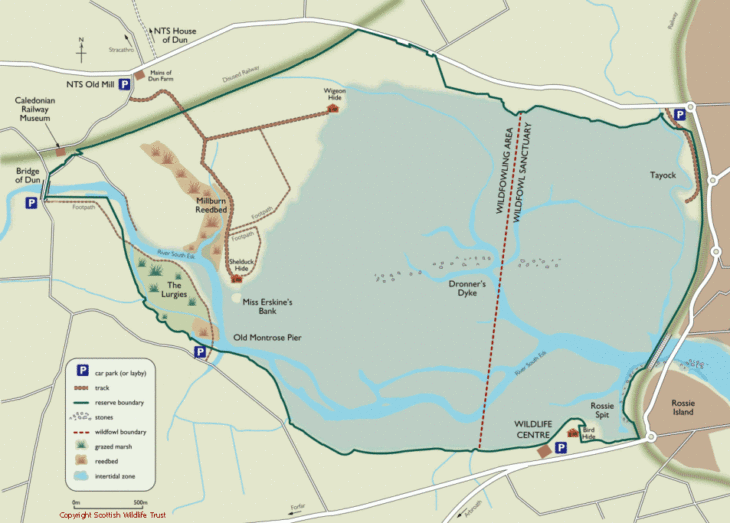
To walk around the reserve is completely FREE and all car-parks are FREE! All the hides are open 24 hours a day, 7 days a week. We close our Visitor Centre car-park at 5pm during the summer months (1st March – 31st October) and at 4pm during the winter months (1st November – 28th February), but you can easily access the Bank of Scotland Hide via a small gate and set of stairs to the right of the main entrance gate.
Views of the Basin and the birds that you’re likely to see varies with the changing tides. Waders and ospreys during the summer months are best seen at low tide. You can check the tide times here. Or, call the Visitor Centre during opening hours.
The Lurgies (Short Walk)
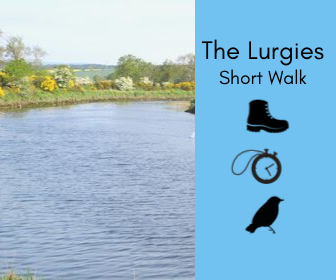
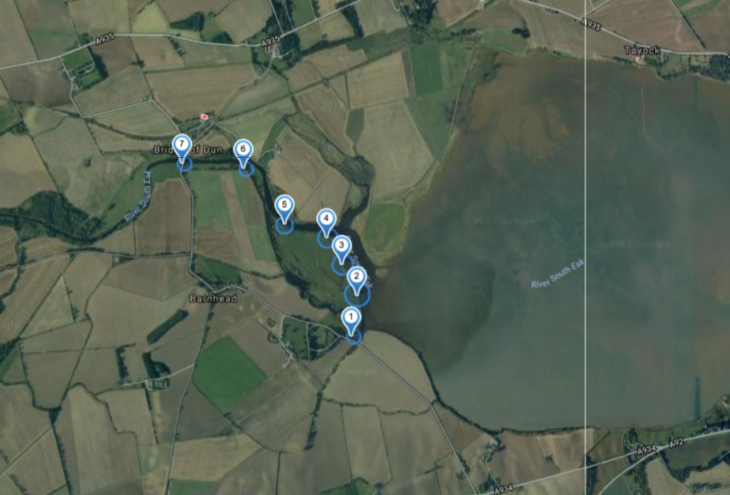
This is a linear walk, which is less than 2 miles and should take less than an hour. Sturdy footwear is advised and there may be cattle in the fields or along the route.
To find the car-park for the Lurgies walk, from the Visitor Centre turn right and take the first right hand turning signposted for Forfar (A934). Follow the road for 1 mile until you reach the right hand turning signposted for Barnhead and Bridge of Dun, with a converted church on the corner. Follow the road for another mile, over the stone bridge until you reach two tall hedgerows on the right. Turn right into the small track and there you’ll find the car-park.
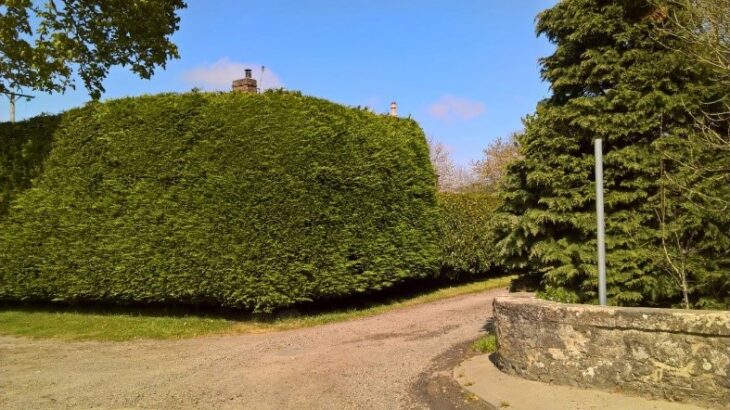
This part of the reserve was used as a dock as far back as 1178. Historically the South Esk flowed into an area know as the Lurgies. The land was reclaimed through the building of the wall, but the area is still marshy and the perfect habitat for reed bunting, sedge warbler and water rail. If you’re lucky, during the summer months you may catch a glimpse of a kingfisher flying through the vegetation.
Follow the sea wall and along the bank of the River South Esk as far as you like and take in the scenery as freshwater meets saltwater.
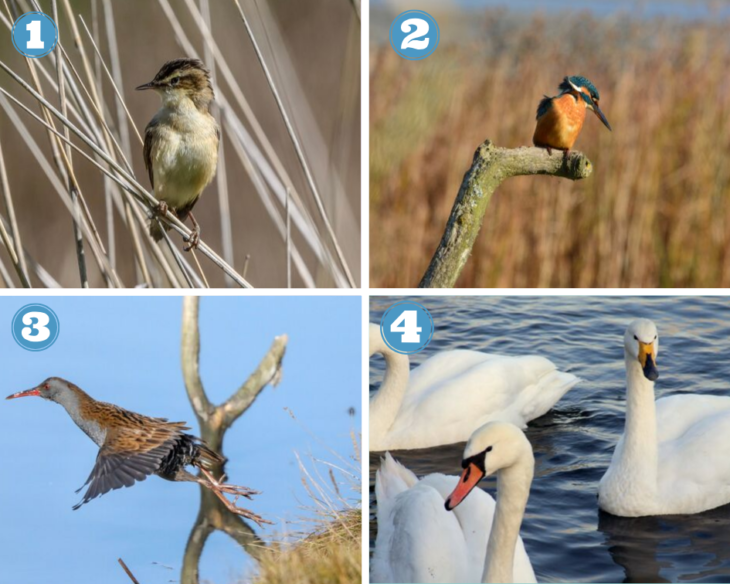
The Lurgies and Bridge of Dun (Long Walk)
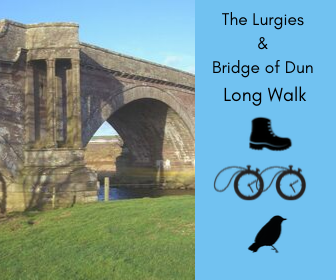
If you’re in the mood for a longer walk, you can carry-on the small track along the banks of the River South Esk until it reaches the magnificent three-arched Bridge of Dun. The bridge was built between 1785-87 and provides a lovely vista upstream and downstream.
You can then follow the road through the quaint hamlet of Barnhead and back to the Lurgies car-park.
This is a circular walk, which is less than 3 miles and should take 2 hours. Sturdy footwear is advised and there may be cattle in the fields or along the route.
To the Shelduck Hide
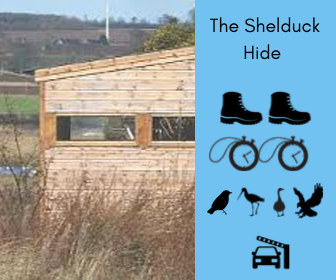
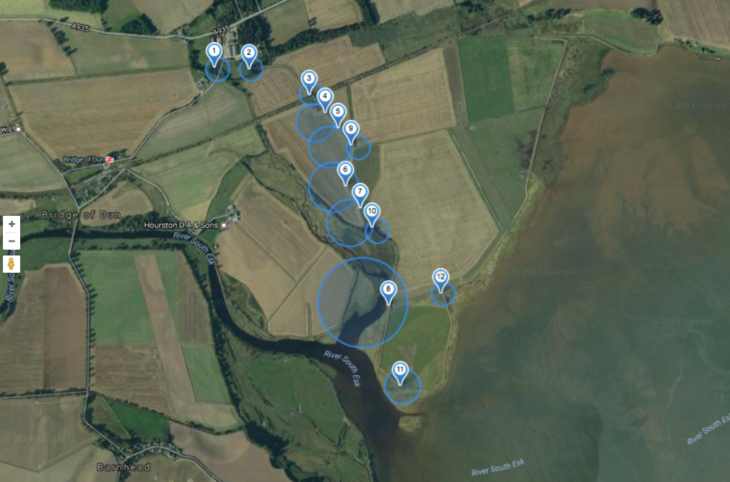
Take a walk down to our newly refurbished Shelduck Hide, through farmland and reedbeds. This is the longest reserve walk, but it takes in some interesting habitats and you can easily combine it with a trip to the Wigeon Hide.
To find the car-park for the Shelduck and Wigeon Hides; the Old Mill Car Park, from the Visitor Centre follow the directions for the Lurgies walk. Carry-on over the Bridge of Dun and take the second right hand turning past the Caledonian Railway Museum on your right. Just before the Mains of Dun Farm on your left will be the Old Mill car-park. This car-park has a height barrier.
This is a linear walk, just under 2.5 miles long which should take 2 hours (not including the time you can while away bird watching!). Sturdy footwear is advised.
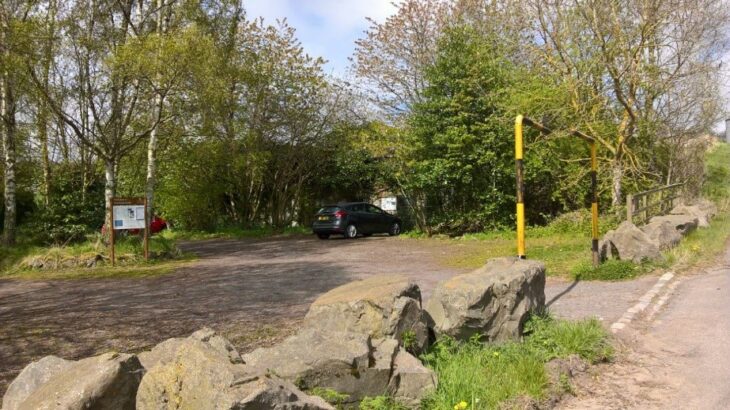
After parking, cross the road and onto the track which runs parallel to the burn. At the junction with the farm track turn right and follow the signs for the Shelduck Hide.
On the walk down to the hide look out for yellow-hammer, European hare, in addition to linnet and twite in the winter.
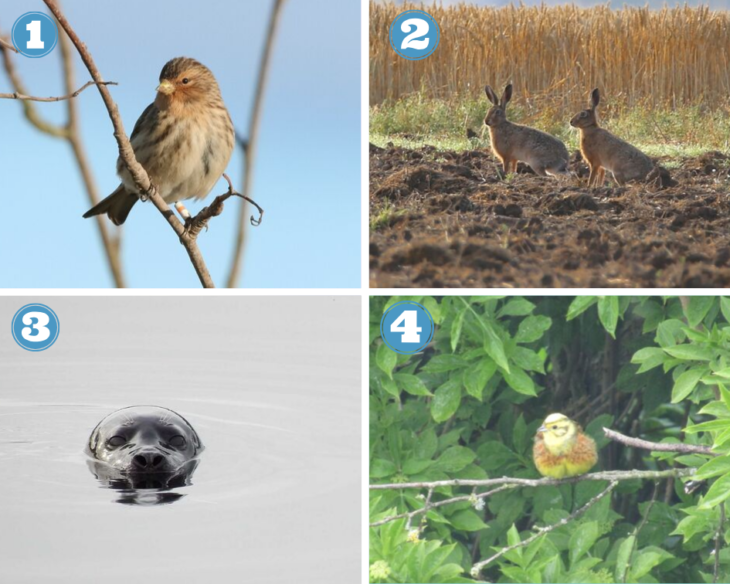
We’ve also had sightings of short-eared owls between the Shelduck and Wigeon Hides.
At the hide, you’re likely to see gulls, swans, little egrets and common seals popping their heads up inquisitively.
To the Wigeon Hide
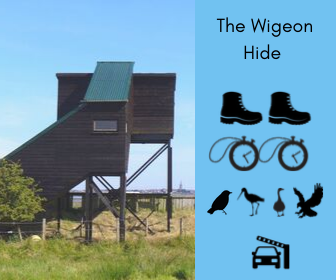
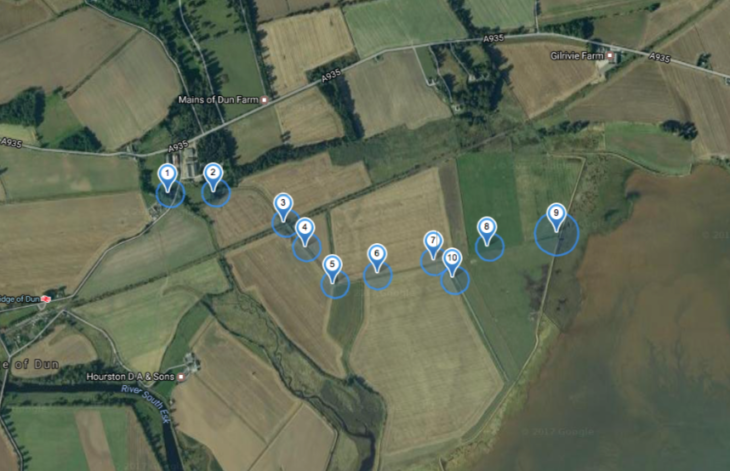
This is a linear walk, just under 2.5 miles long which should take 2 hours (not including the time you can while away bird watching!). Sturdy footwear is advised.
It’s best to visit the Wigeon Hide at around high tide, you can call the Visitor Centre on 01674 676336 to find out when high tide will be on the day of your visit. Follow the directions for the Shelduck Hide and at the junction take the left hand track through the arable land. This area is home to breeding grey partridge, a species of conservation concern. Most species of wader on the reserve can be seen near here on a winter’s day. Keep your eyes peeled for wigeon, shelduck, eider and godwit.
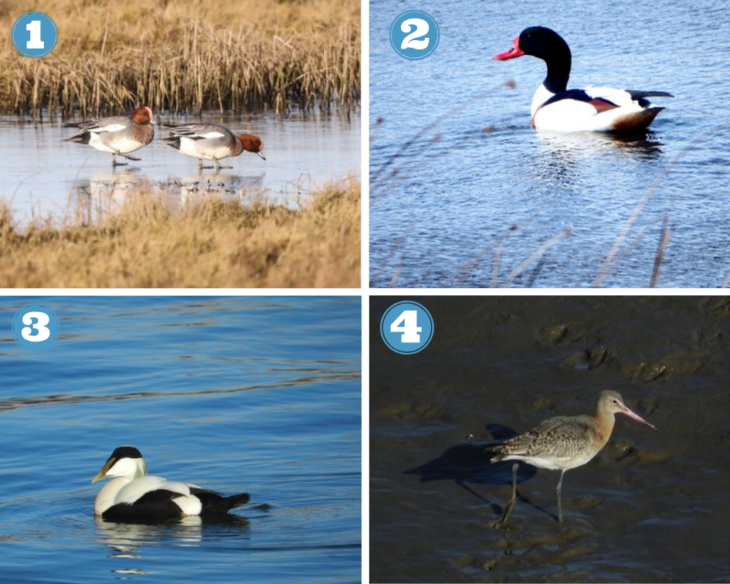
The Tayock Hide and Walk
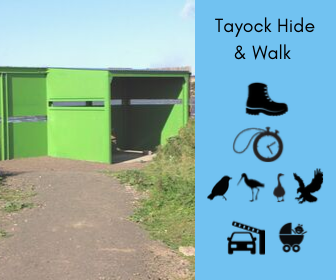
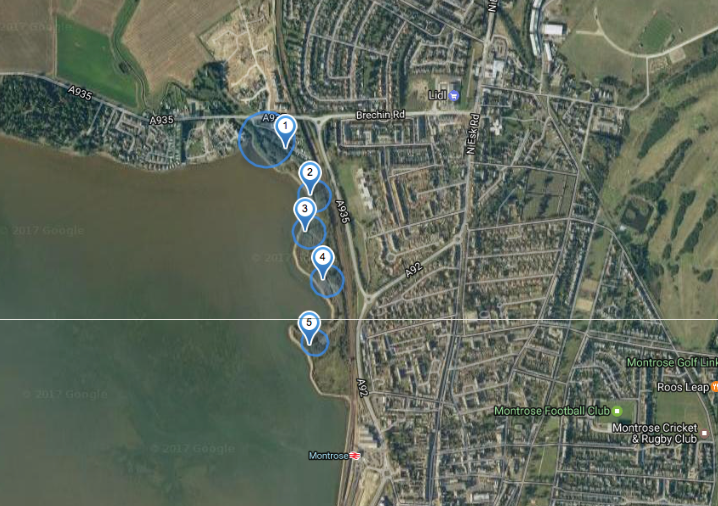
This walk is circular, less than 1 mile and should take less than an hour. Normal footwear can be worn and the majority of the path is suitable for prams.
The Tayock walk is located on the Western side of the Basin, off the A935 Montrose to Brechin road. The turn off for the car park is on the left, just after the sign for St Christopher’s Caravan Park. There are height barriers (6ft 6in) at the car park entrance.
This is a short suburban walk, that takes in a habitat of man-made banks, grassland and mixed woodland. This area of the reserve was used as the municipal town refuse site between 1950 and 1976. Local schools and businesses have helped to plant over 4,000 trees such as willow, birch, sycamore, cherry and hazel, which attracts a variety of smaller birds. As you’re walking to the hide, listen out for whitethroat, blackcap, robins and warblers.
The hide, which is a basic shelter (no seating is provided here), gives you a great view of the rocky shoreline and exposed mudflats at low tide. You can watch feeding redshank, curlew and oystercatcher probing for lugworms and bivalves.
In the autumn and winter months, this is the best place to watch the spectacle of the geese rise for their feeding grounds in the early morning (around sunrise is advisable to catch this sight) and return in the evenings to roost (look up the times for sunset!).
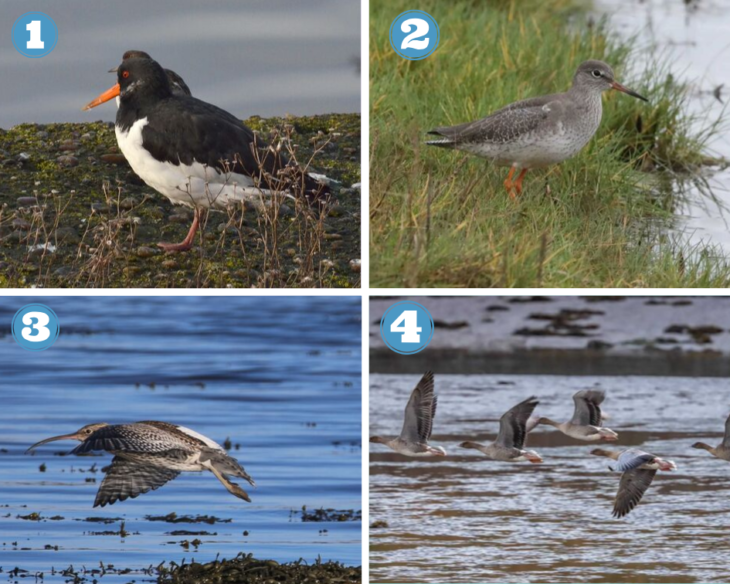
A Personal Audio Tour
Montrose Basin Visitor Centre and reserve now have audio tours which are accessible via the izi.TRAVEL app or online.

Listen to Audio Tours as you walk around Montrose Basin Reserve
The izi.TRAVEL app offers thousands of audio tours for walks, museums, and cities all around the world (in 99 countries!), and now includes 4 tours for the Montrose Basin: The Visitor Centre and Bank of Scotland Hide, The Tayock, The Lurgies, and The Shelduck and Wigeon Hides.
The guides can be accessed either online (through your computer or your phone), or through the izi.TRAVEL app which is available for iPhone and Android.
So if you’ve ever wondered where on the Montrose Basin will offer you the best chance of spotting a kingfisher, or when is the best time for seeing ospreys or pink-footed geese, then this new set of audio tours might be just the thing you need. If you’re familiar with the staff and volunteers at the visitor centre, you may even recognise a few of the voices guiding you around…
If you’d like any advice on which walk would be most suitable for you, or your party, or you are visiting at a particular time of year to see a bird you’d love to tick off your list, do not hesitate to get in touch with our helpful members of staff at the Visitor Centre on 01674 676336 or montrosebasin@scottishwildlifetrust.co.uk. We’d be more than delighted to give you helpful pointers on the best time of day to visit and let you know of any recent sightings.
You can also find out more about disabled access, bus routes and other facilities here.
Rachel Mackay-Austin
Teacher Naturalist / Seasonal Visitor Centre Assistant
Help protect Scotland’s wildlife
Our work to save Scotland’s wildlife is made possible thanks to the generosity of our members and supporters.
Join today from just £3 a month to help protect the species you love.
Preface
Are you longing to see a kingfisher? Would you like to see basking seals? Or, do you like to challenge yourself to identify wading birds? Well, at Montrose Basin there …
